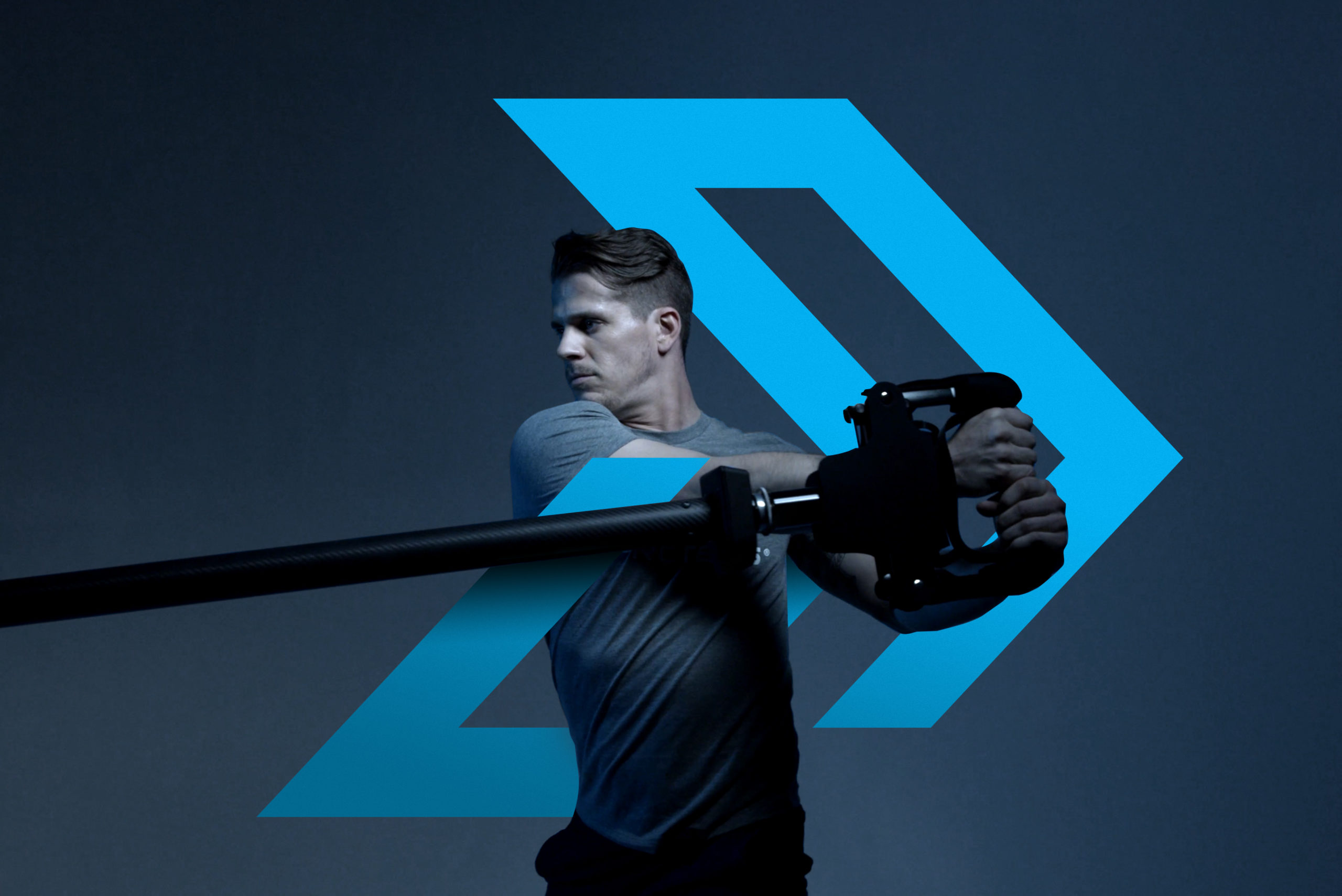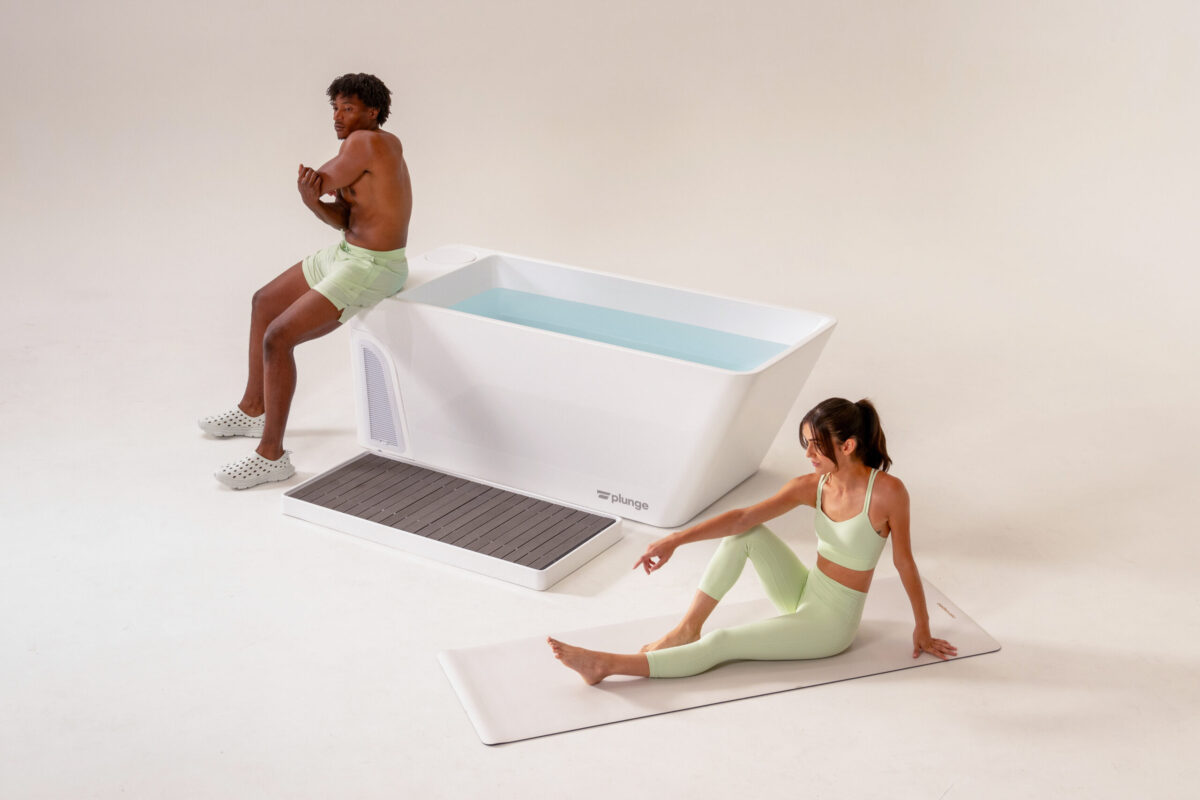Startup Q&A is an interview series showcasing early-stage health, fitness, and wellness companies.
In this Q&A, we had a conversation with Sam Miller, founder and CEO of Proteus Motion — a company unlocking pillars of human performance with its patented machine. Sam discusses his own iterations of his father’s MIT-made invention that enables three-dimensional resistance training designed to measure and drastically improve strength and power. We also get into his company’s trickle-down customer acquisition playbook for both B2B and B2C markets.
Can you tell us about what you’re working on at Proteus Motion?
Sam Miller: Proteus Motion is a hardware-enabled SaaS business with an initial focus on sports fitness and rehab, elite trainers, and athletes.
In recent years, the explosion of fitness technology has been largely about digitizing existing equipment. But these solutions fail to properly address two key pillars of human performance, strength and power.
Equipment like free weights and cable machines can only provide forces in one or two dimensions, but to measure strength and power for movements you perform in real life (like rotation), you need forces in three dimensions.
These dimensional limitations hinder the quality of data, insights, recommendations, virtual coaching, and content that existing smart fitness products can provide through their software products.
At Proteus Motion, we have built the world’s first and only dataset for three-dimensional strength and power, unlocking a new frontier in human performance data and software products for physical evaluations, exercise, and rehabilitation.
We did this by inventing an entirely new type of resistance training called 3D Resistance™. It provides constant resistance throughout an entire movement, which means that both strength and power can be accurately measured in three dimensions for the first time ever.
3D Resistance™ is also twice as effective as cables and free weight because the resistance is constant throughout a movement without inertia or gravity (resulting in higher peak muscle activation for a longer duration).
Some of the best trainers and athletes, across all major sports, are already utilizing Proteus in their training.
How did you come up with the idea? What key insight led you to pursue this opportunity?
SM: I founded Proteus after drawing inspiration from my own childhood sports rehab experiences and from a mechanical prototype developed at MIT by my father, Larry, in the early 1990s.
In my youth, I suffered from a painful joint condition in my knee called osteochondritis dissecans and Sever’s disease in my ankle. I spent many hours rehabbing my legs and was often frustrated by equipment that only allowed me to train movements in one or two dimensions (like with squat or bench) that I didn’t feel translated to my sport and also the lack of objective data as I worked toward recovery.
But to do this required the invention of a technology that could access the third dimension in both measuring and training physical strength and power. Just as technology like 24/7 wearables and the x-ray created huge markets in both sleep/recovery and body imaging, I saw a huge opportunity to create a new frontier in human performance.
Now, we are working towards establishing a new universal standard for evaluating, diagnosing, predicting, and enhancing physical performance.
How did you turn your idea into a company?
SM: In 2012, my interest in the emerging trends of intelligent strength training, connected fitness, and rehab came around to recognizing the incredible opportunity in quantifying strength and power—beyond a single dimension like a squat—by creating a totally new type of resistance training system. I realized I could use my dad’s original mechanical prototype from MIT in the early ’90s to start, which led to my own patented inventions.
I read 1,000+ published research studies, textbooks on physiology, kinesiology, and talked to hundreds of trainers and therapists. In 2015, I left my job and moved into an 8’x8’ office inside a community college, bootstrapped for 18 months, and established an early collaboration partnership with the Hospital for Special Surgery (now a customer and an investor). We incorporated in 2016 as Boston Biomotion (changing our name to Proteus Motion in 2019).
Knowing that this ambitious vision required brilliant people with deep experience across a broad spectrum of domains and industries, I developed a great network of advisors and mentors — like Paul Byrne, who led Precor for almost two decades and brought the elliptical trainer to market.
Paul used to tell me that when they came out with the elliptical trainer (one of the best-selling fitness products of all time), no one really “got it” until they experienced it — the same is true with driving a Tesla, trying VR, and using Proteus. It underscores our need to have systems out there for people to try and use.
Now, with more than 75 Proteus systems installed and a Net Promoter Score of 70, we have proven Proteus to be an insanely sticky product.
After years of development, field testing, and patent acquisition, Proteus Motion has literally reinvented resistance training and measurement and has been adopted by some of the most renowned sports, training, and rehab institutions in the world.
How big can this get? What’s the addressable market and how do you go about capturing it?
SM: The x-ray/MRI created a $60B+ body imaging market, and 24/7 wearables created a $30B+ sleep and recovery tracking market. A huge advantage of our 3D Resistance™ system is that it is beneficial and safe for all skill levels, all ages, and all athletic pursuits — in both measurement (software) and resistance training (hardware).
Strength and power are not benefits that are exclusive to athletes. Therefore, we can address a large portion of the entire $100B+ health & fitness industry. Within our target segments across B2B sites (including Sports Performance & Rehab, General Population, Medical, and Older Adult) as well as B2C at-home fitness, we estimate a $55B+ total hardware opportunity and a $10B+ annual software recurring revenue opportunity in the US.
We are following an approach similar to a wearable technology we have been fans of, WHOOP. Leveraging sports performance businesses and elite athletes and trainers for brand building, data collection, product visibility, and collaborations, we validate our first-ever data and develop software products through our exclusive platform. Then, the planned expansion of our hardware system, along with additional unprecedented advancements to our software, will make Proteus technology accessible to many other markets.
Who is the core customer? How are you acquiring customers? And how will you grow the customer base?
SM: We are currently focusing on the sports performance & sports medicine market, targeting businesses that provide services to competitive athletes — roughly 12k locations serving more than 10M athletes.
Many of these facilities are trainer-owned, so we have developed deep relationships and collaborations with some of the world’s top trainers. This helps us: a.) interpret the data to inform new software products; b.) get access to some of the world’s most elite athletes; and c.) let the trainers evangelize and educate the markets about Proteus.
We are working closely with the trainers for Patrick Mahomes, Damian Lillard, Giancarlo Stanton, and top stars in golf, MMA, boxing, and tennis. Because of the strength of our work in developing these key core relationships, as well as the deep buy-in by these elite trainers, customer acquisition has been able to be almost 100% organic and inbound through word of mouth.
As we increase our product offerings for different markets like general population fitness, medical, older adult, and at-home, we will develop strategic initiatives for each through robust investment in education, social, PR, sponsorships, events, and trade shows, for example.
Looking at your road map, what are some of the milestones you’re targeting over the next 3-6 months?
SM: In the next six months, our hardware footprint will expand to over 300 sites with production in Texas, producing 50 units per month. We aim to grow significantly, drive rapid ARR growth, and expand access to tens of thousands more trainers and end users, as well as continuing R&D for next generation hardware.
For our software products, we are expanding our offering to include comparisons and leaderboards, personalized recommendations, and new physical assessment products with our elite trainer partners (e.g. tests for mobility, optimal resistance, endurance, etc., all performed by a user in under five minutes).
And, of course, the elite trainers and our strategic partnerships are critical to our continued development and success, so we will continue to develop deeper and broader relationships!
Anything else you’d like to share with readers?
SM: Three things…
First, to date, Proteus software products have gathered over 100M data points, bringing the potential for unmatched levels of personalization to training and recommendations based on deficiencies in power vs. strength vs. acceleration across the entire body. A simple example of this is Proteus’ “strength and power test” — a 3-minute full-body assessment that has shown us that the majority of athletes (56%) are deficient in power, not strength!
This indicates that trainers should be prescribing lighter resistance exercises at high speeds to improve power output. We are currently taking a “hands-on” approach to validating many insights like this and building automated recommendations into the software products to give Proteus users unprecedented personalized training programs and insights.
Second, if you’re interested in pricing, please reach out. We currently sell our hardware at a price competitive with a commercial treadmill, plus the B2B software subscription (average 48-month initial commitment) for full access to our product suite.
Finally, We are hiring! Shoot us a note at jobs@proteusmotion.com.
If you’re interested in having your company featured in our Startup Q&A series, send an email to team@fitt.co.
 Proteus Motion
Proteus Motion


